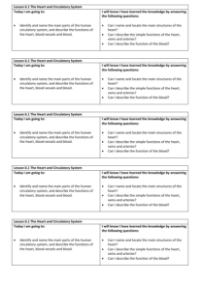The Heart and the Circulatory System - Lesson Plan

Science Resource Description
This comprehensive lesson plan is designed to deepen Year 6 students' understanding of the human circulatory system, specifically the heart and its functions. The lesson aligns with the National Curriculum, aiming to help students identify and name the main parts of the circulatory system, describe the functions of the heart, blood vessels, and blood, and correct common misconceptions. For instance, students will learn that the heart is made of a special muscle called cardiac muscle and that arteries, which are thicker than veins, carry blood at higher pressures. The lesson also dispels the myth that the heart is symmetrical and located in the middle of the chest, explaining that it is actually positioned to the left to efficiently pump blood throughout the body.
Students will engage in a variety of activities that cater to different learning styles and cross-curricular links, such as drawing the circulatory system in art, creating line graphs in maths, and exploring historical figures like William Harvey. Activities include making a heart model, researching blood, and measuring heart rate before and after exercise to understand the physiological changes that occur. Health and safety considerations are noted, especially for those with respiratory and heart conditions, and sensitivity is advised for potentially uncomfortable topics. The lesson culminates in a plenary where students assess their knowledge of the heart's function, its structures, the difference between types of blood vessels, and the role of blood in the body.







